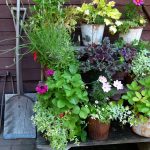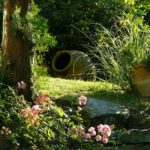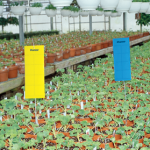So, you’ve realized that your garden can be turned into a thing of beauty and you’ve got time and money to invest? Congratulations and welcome to the club of amateur garden landscapers. We don’t meet once a month to discuss new ideas, nor do we ever stop making changes to our design. There is always room for improvement, as they say, but before you can improve you have to start with something. What do you need to take into consideration?
Space
Obviously. Don’t be discouraged by how small or intimidated by how big your garden is. There are many solutions and options to choose from. Finding a suitable one, to begin with, depends on many factors, especially finances.
Elements
Do you want to use your own tomato for that gazpacho in late August? Would you like to be able to entertain friends by a grill or would you rather allow kids some space to roam freely? Your wishes and plans can be saved on a piece of paper, though many are turning to free software for help.
Know your space
You need to know which part of the garden gets the most sunshine, where excess water flows as well as which way the wind usually blows. These are all important factors for your final design. Perhaps they will make you realize that your first sketch is not really the best idea.
Start small
Choose a small segment of the garden to work on first. It will be easier for you to focus on, cheaper, and you’ll get an idea about what it takes to cultivate a space. If you can’t come up with an original design, fear not. There are so many wonderful and creative garden landscaping ideas you can use to inspire you. A small improvement might give you great satisfaction.
Basic design principles
You’ll have to learn about colors, sizes, shapes and materials and how they interact. This is quite important if you want to achieve the right effect. It is also good to know when each tree or shrub blossoms, and if they do, what color the petals are.
Terminology
This may not seem crucial, but in order to make the most of all the help available, particularly on the Internet, you need to be able to understand what people are talking about. Here is a glossary to help you get started.
Experiment if you wish
Not every plant needs to be in a bed. Think flowerpots, for example. If you’re not obsessed with symmetry, you can let your imagination run wild and create a masterpiece. Luckily, you may change any part of your work if you realize that’s not what you had in mind.
First things first
Which part of the garden you need to work on first? Is it the lawn, so that kids can play? The backyard, because it’s small and all you can afford at this moment? Whatever the answer, you need to be aware that converting your garden is usually a long process. Don’t be fooled by those TV shows where dozens of knowledgeable, young and strong people storm out of trucks and pick-ups and transform a lucky homeowner’s garden in a day or two. In your case, it will take time. Much more time. And patience.
If you approach garden landscape design as a never-ending process, you won’t be wrong and you’ll be able to appreciate every phase. Ideally, you should equally enjoy the process and the outcome, and learn from the mistakes you’re bound to make. Hopefully, your loved ones will get on board with your idea(s), which would make it even more special and precious. The time spent planning and implementing the plan will most likely be very exciting, but you shouldn’t let it turn into too much stress. The whole point of having a nicely designed garden is to relax and enjoy it, and we hope that’s exactly what you’re going to do.









